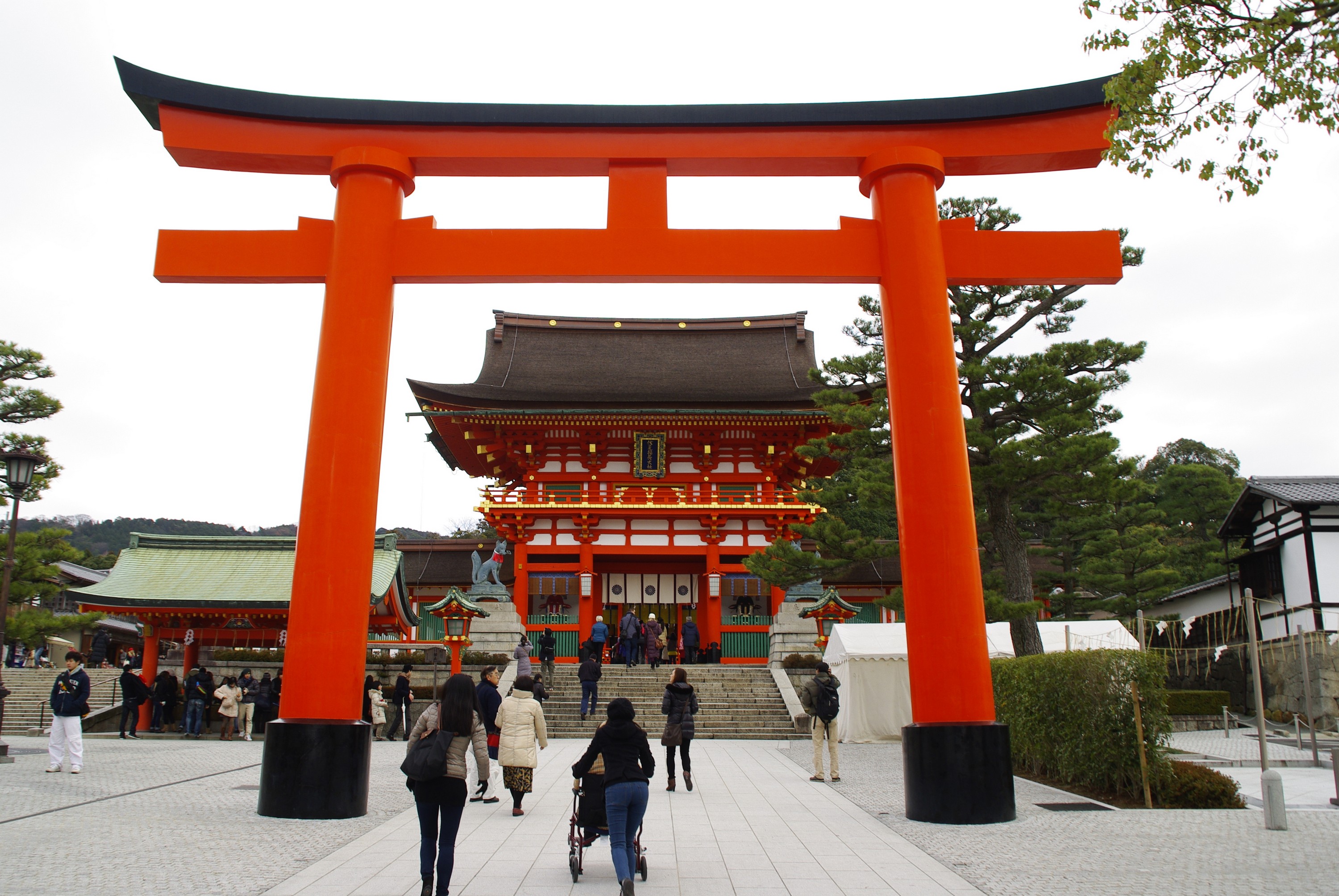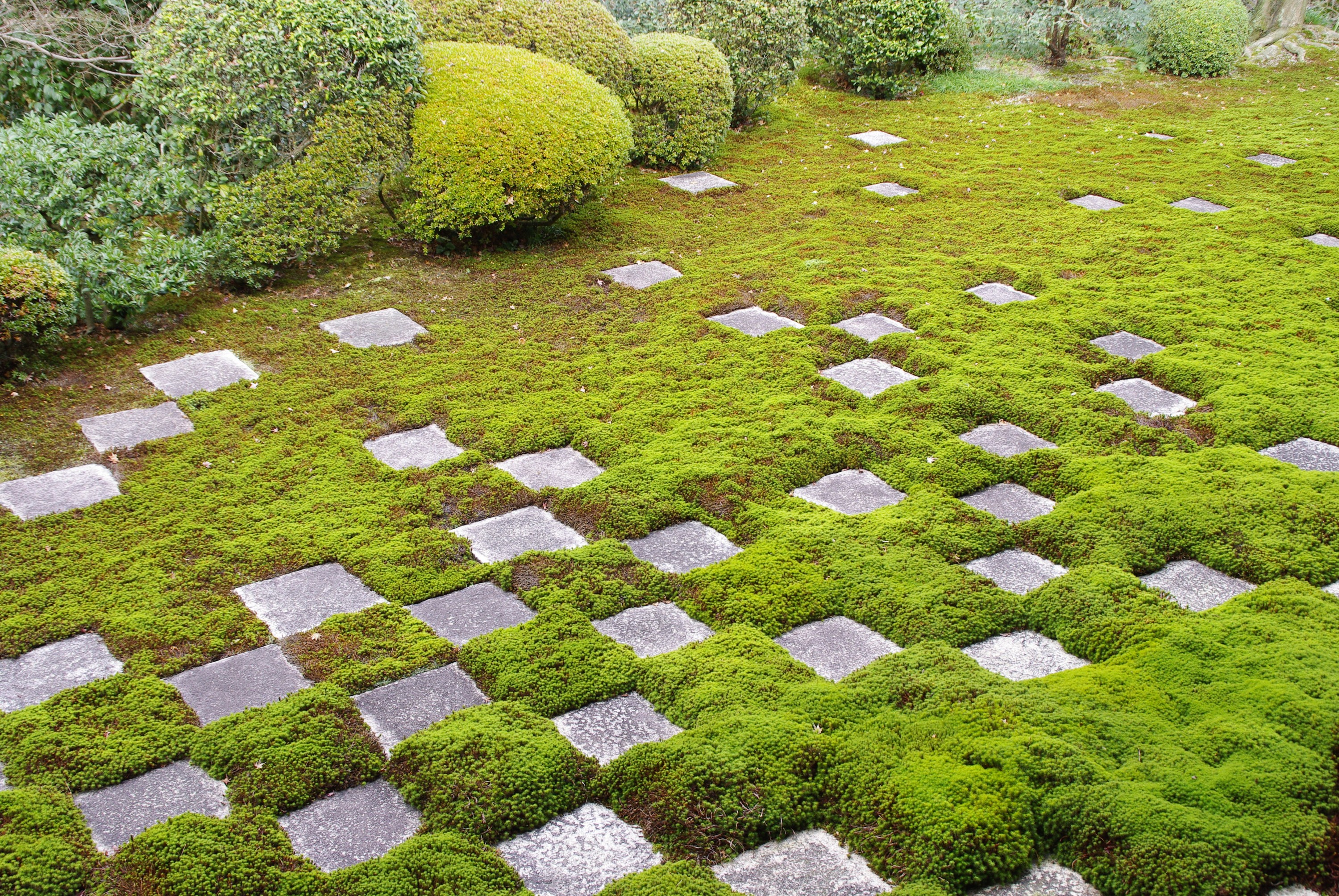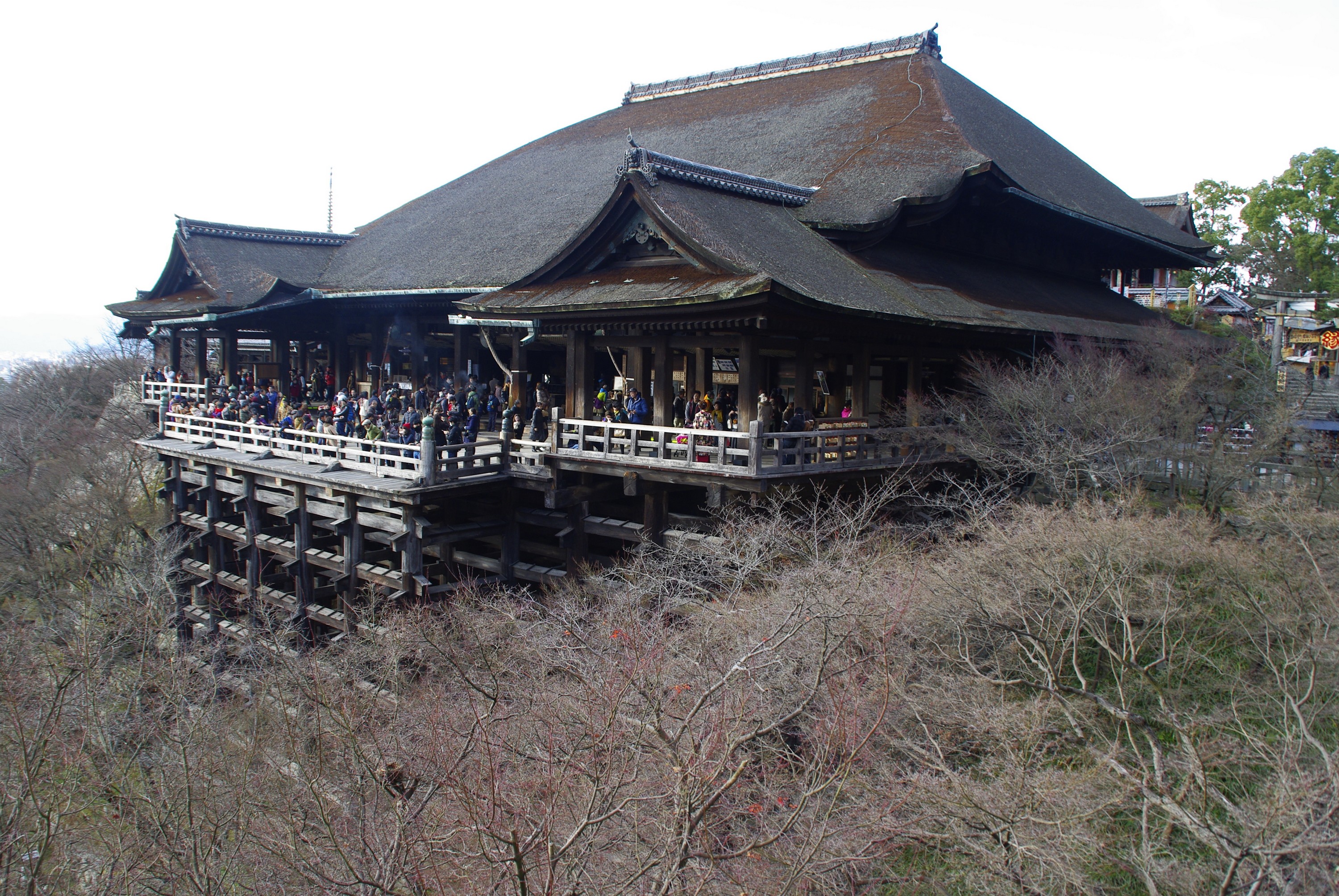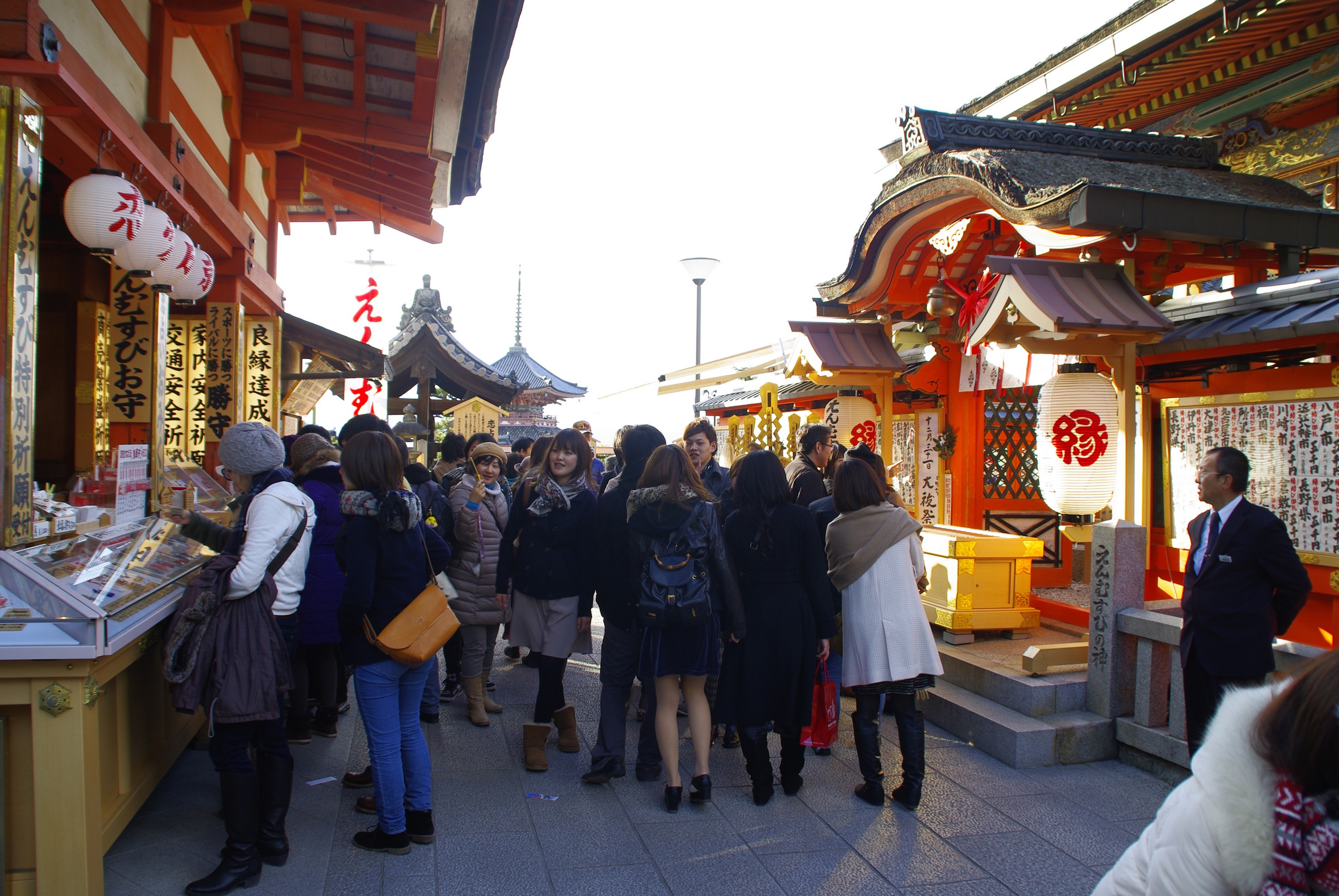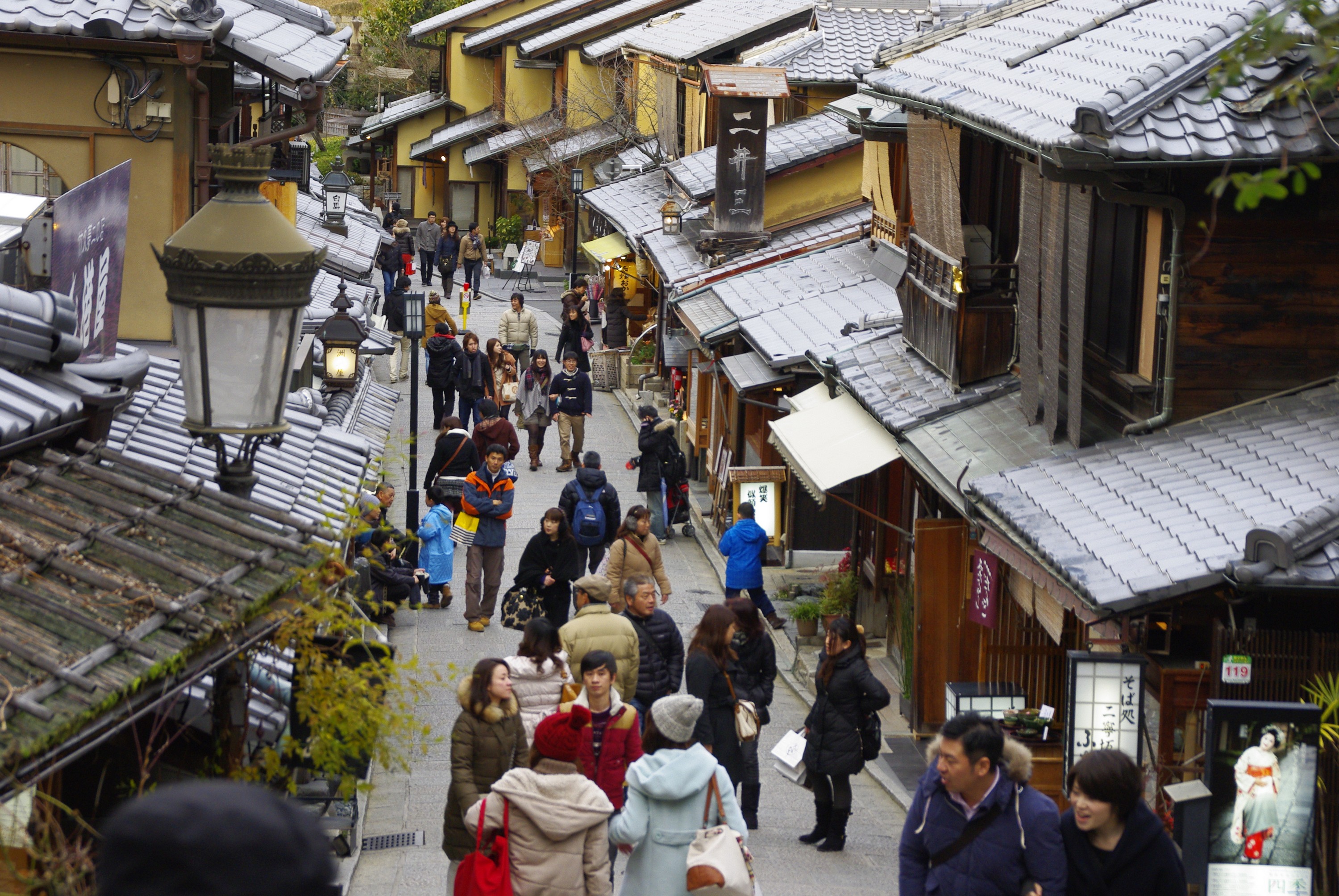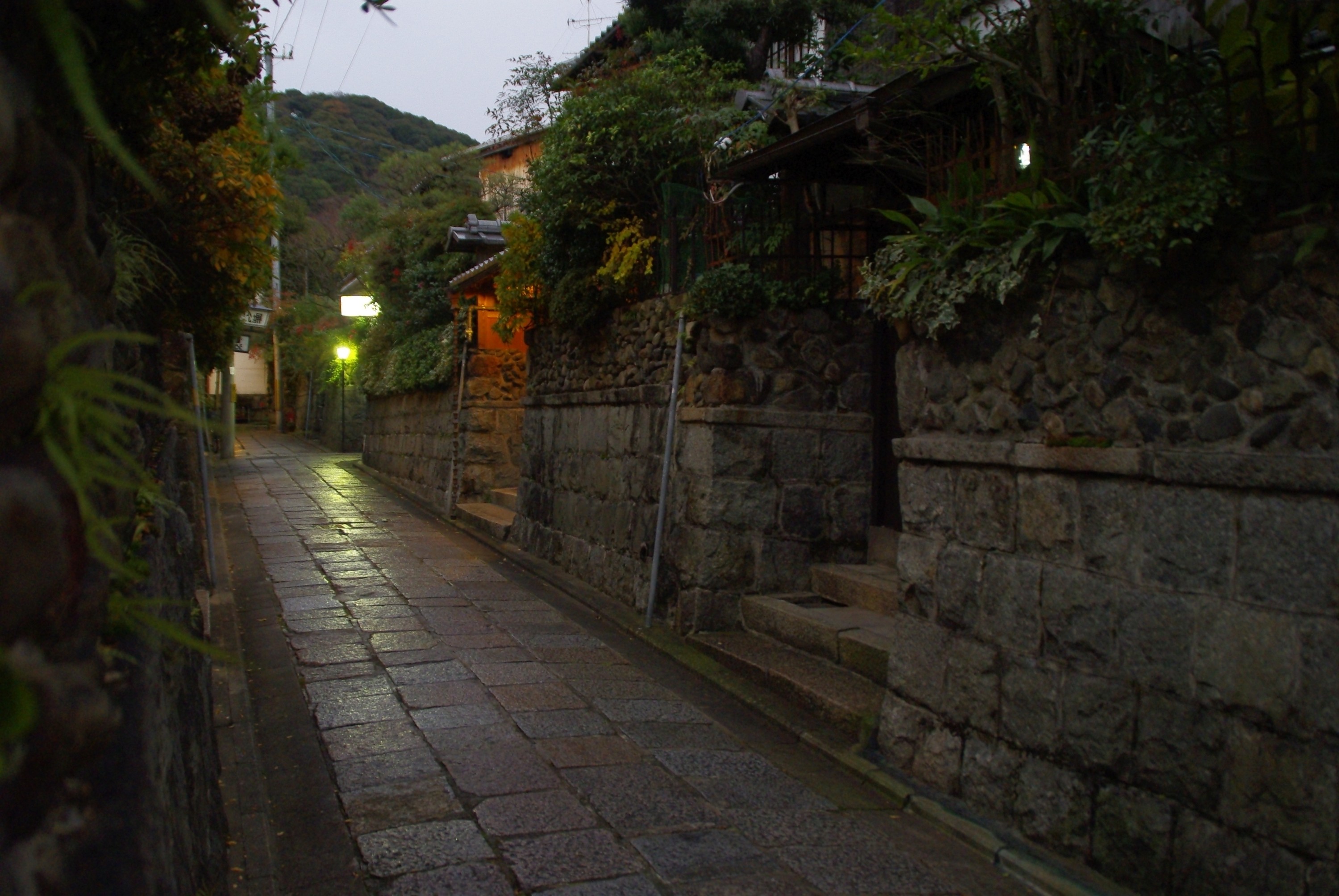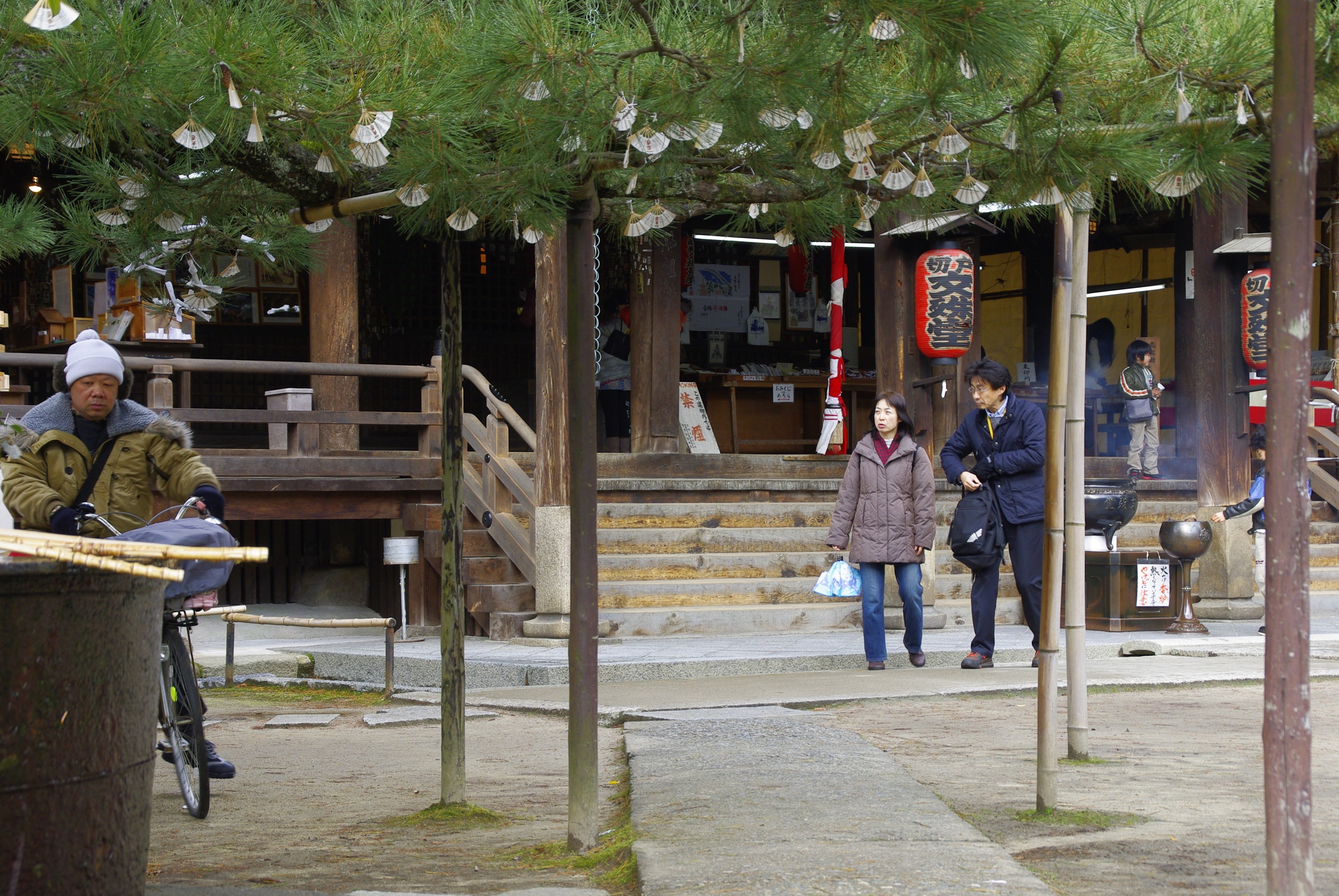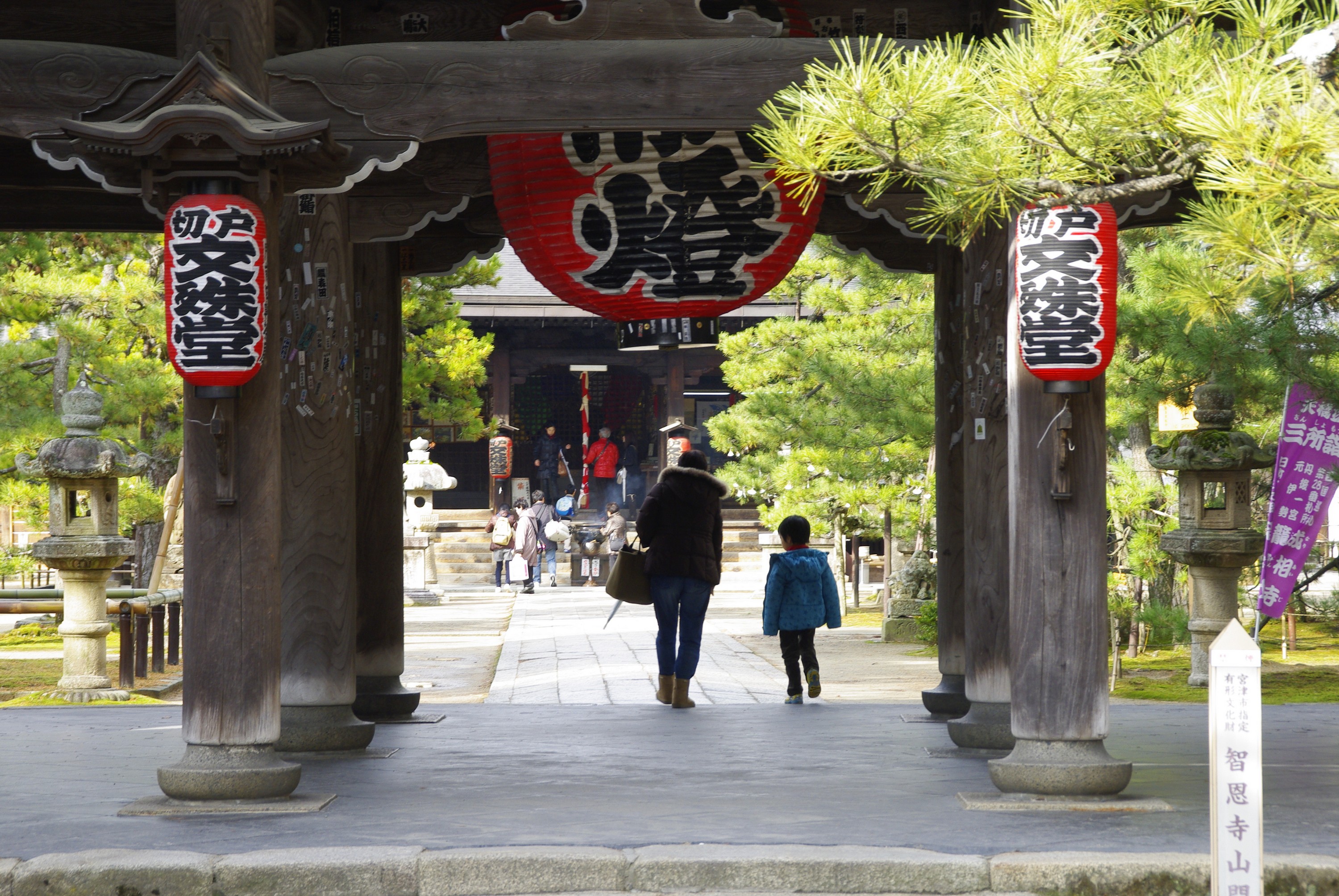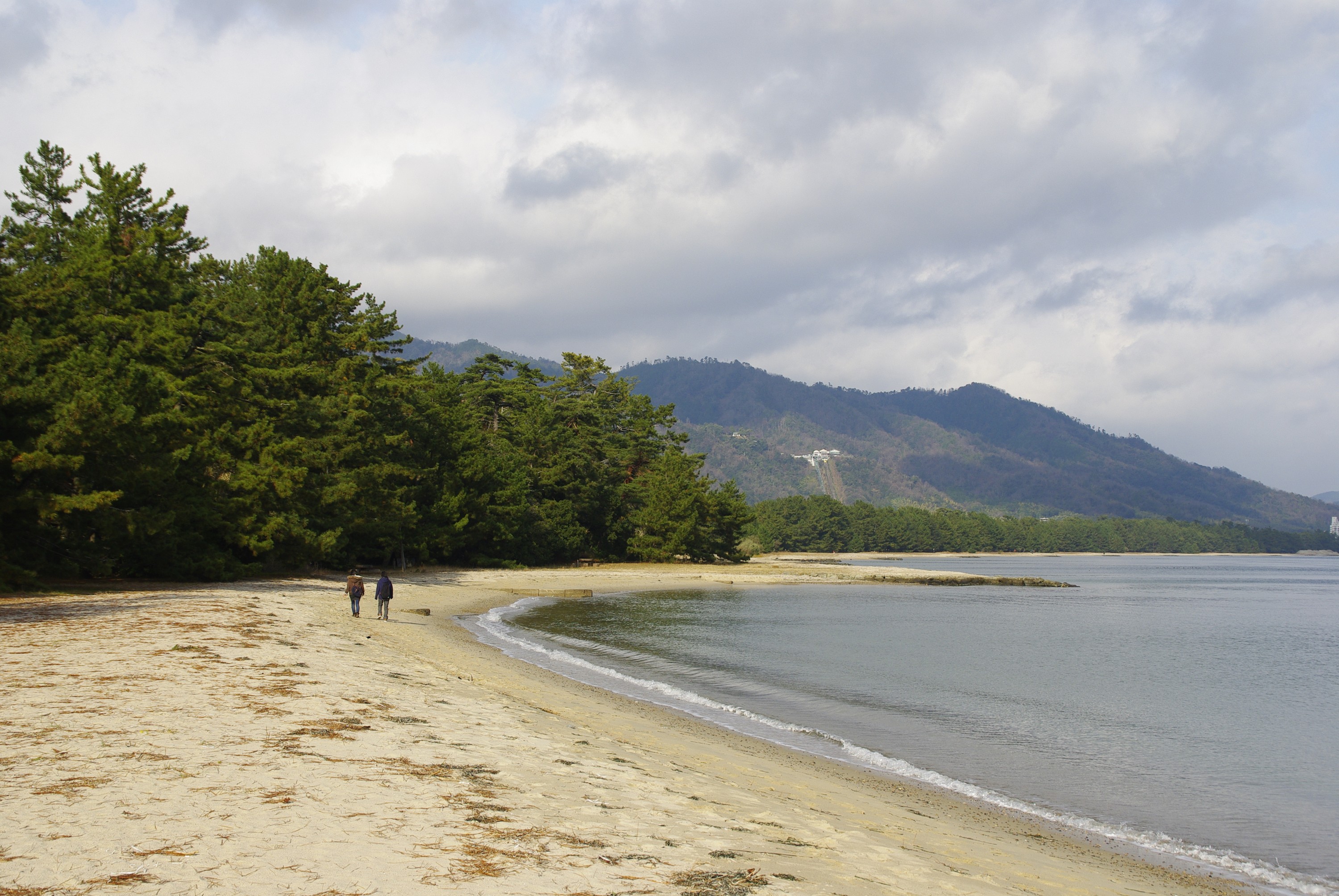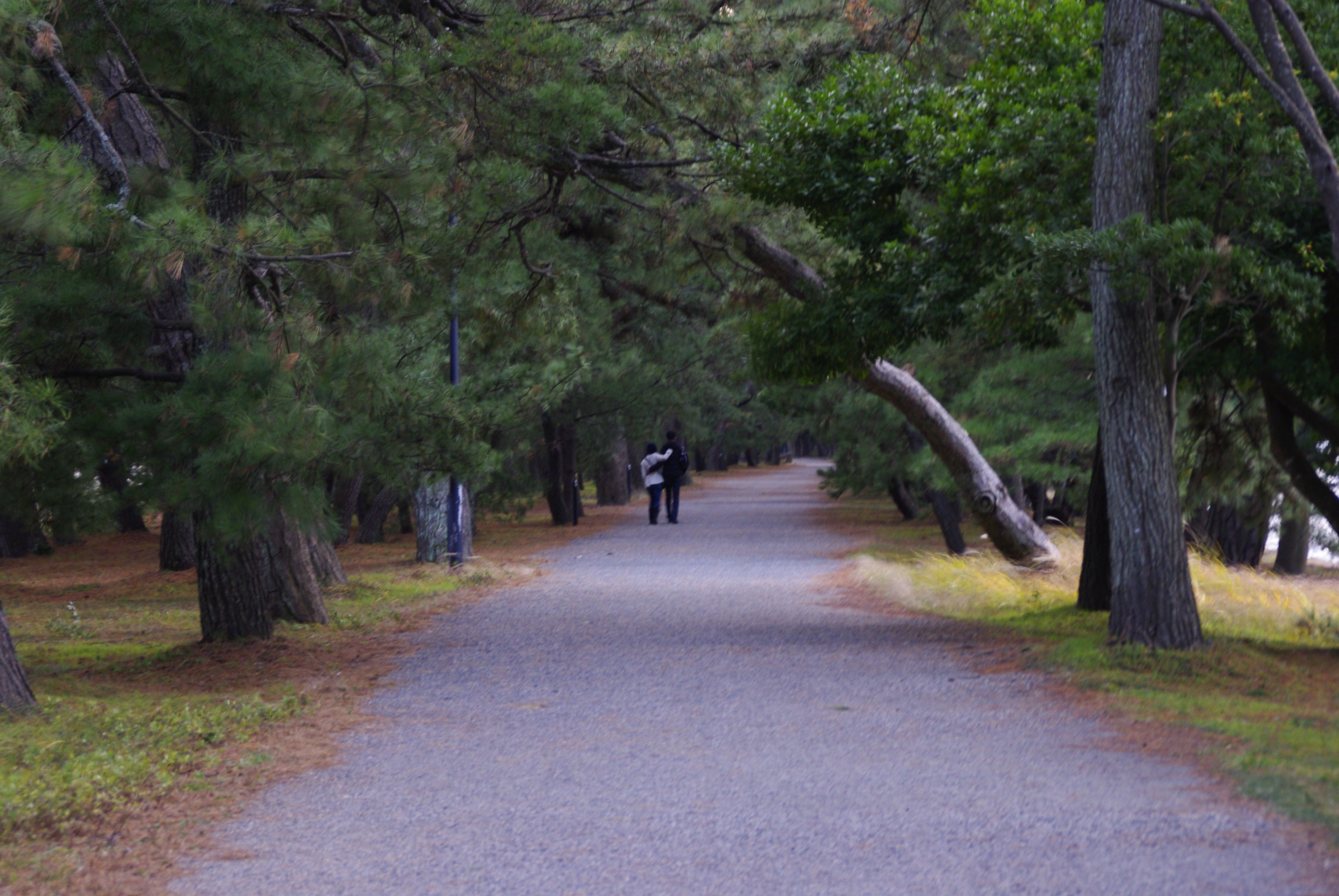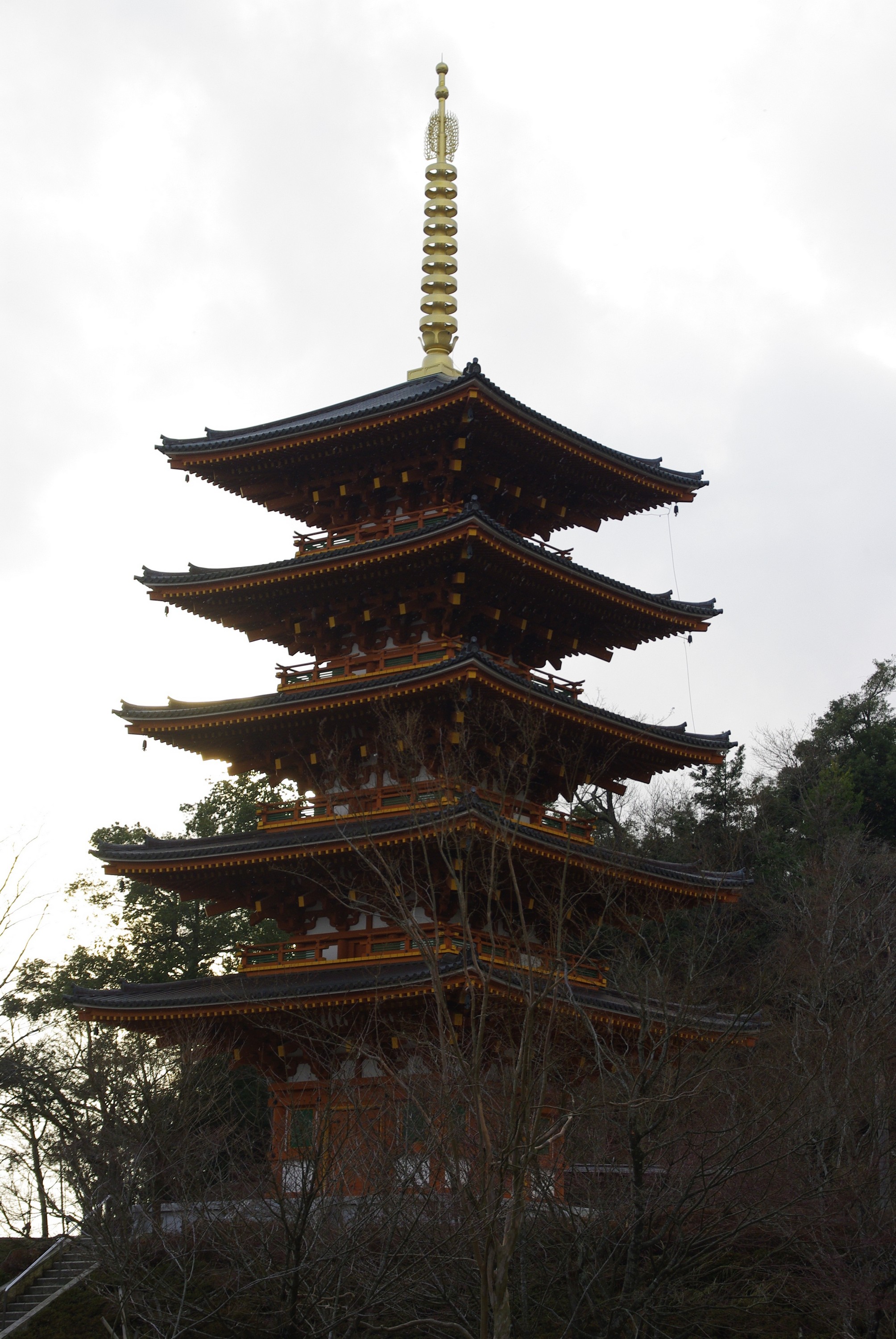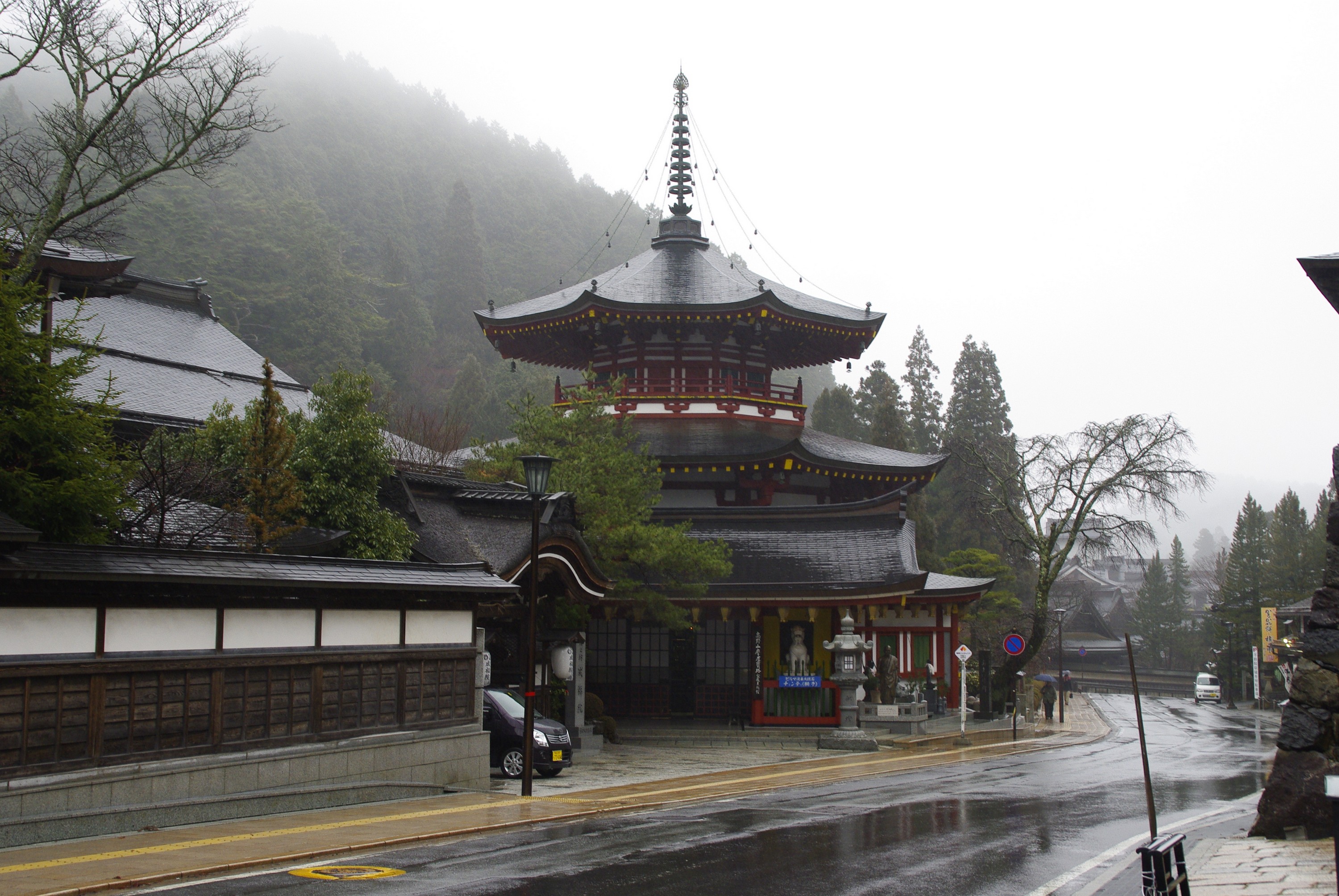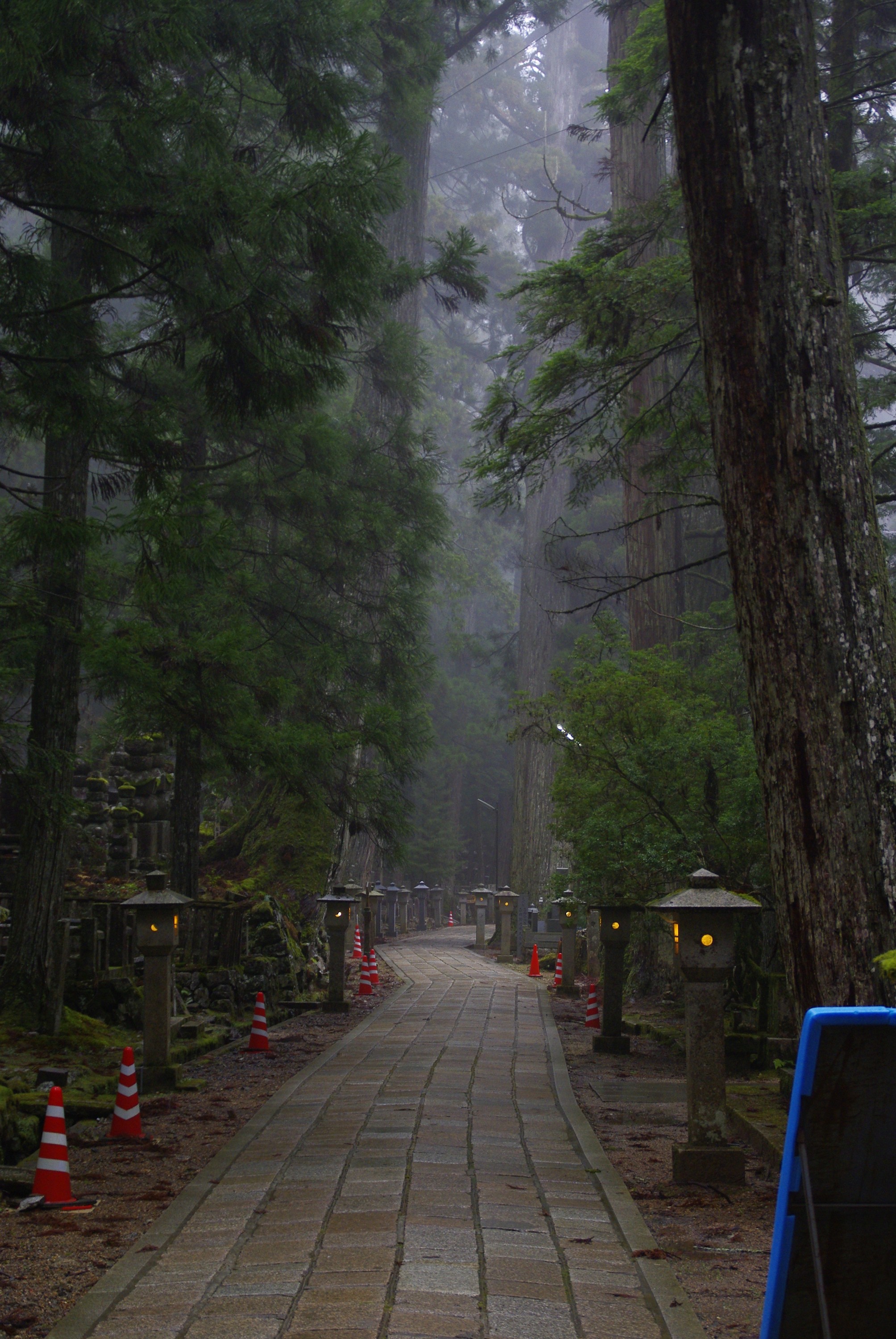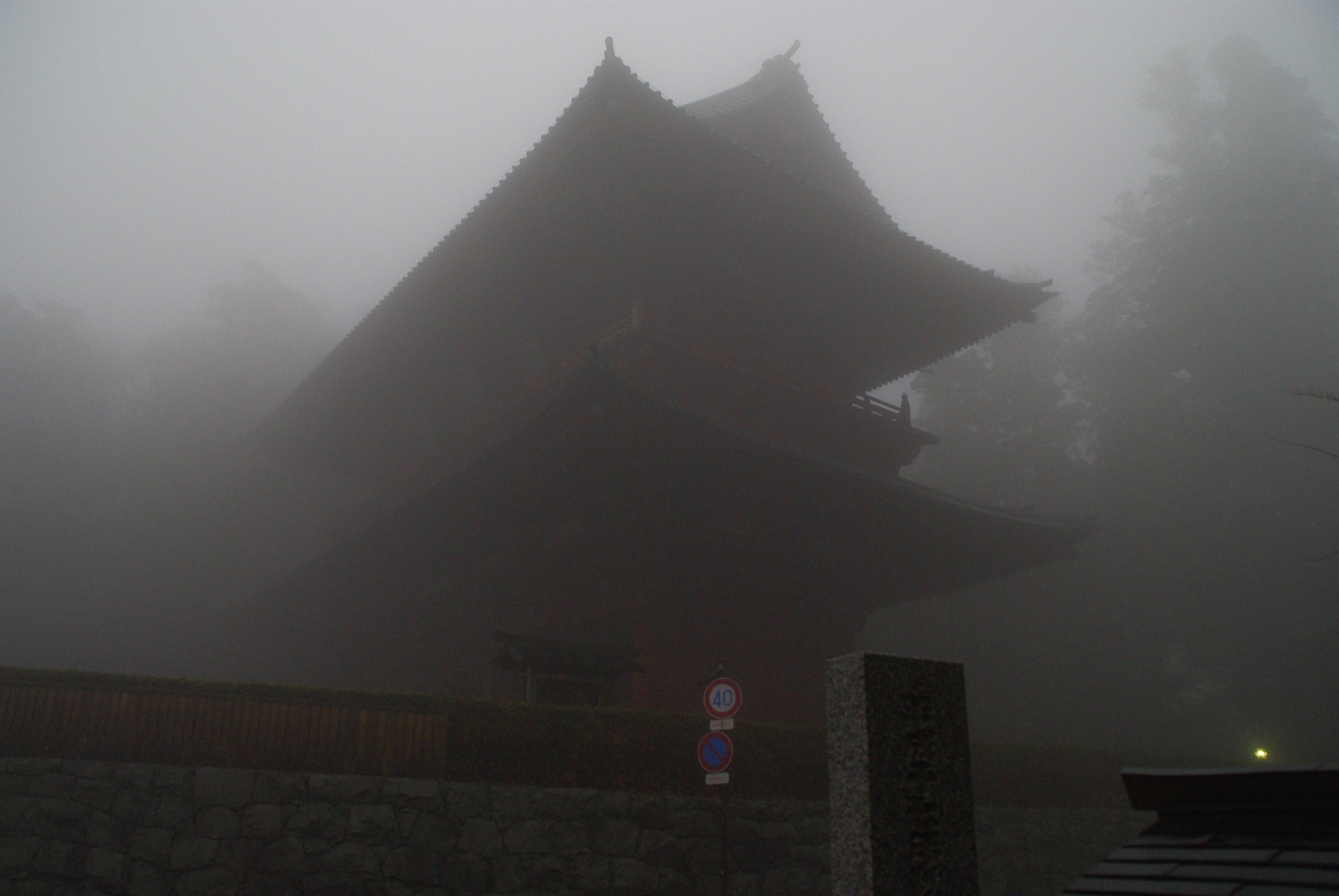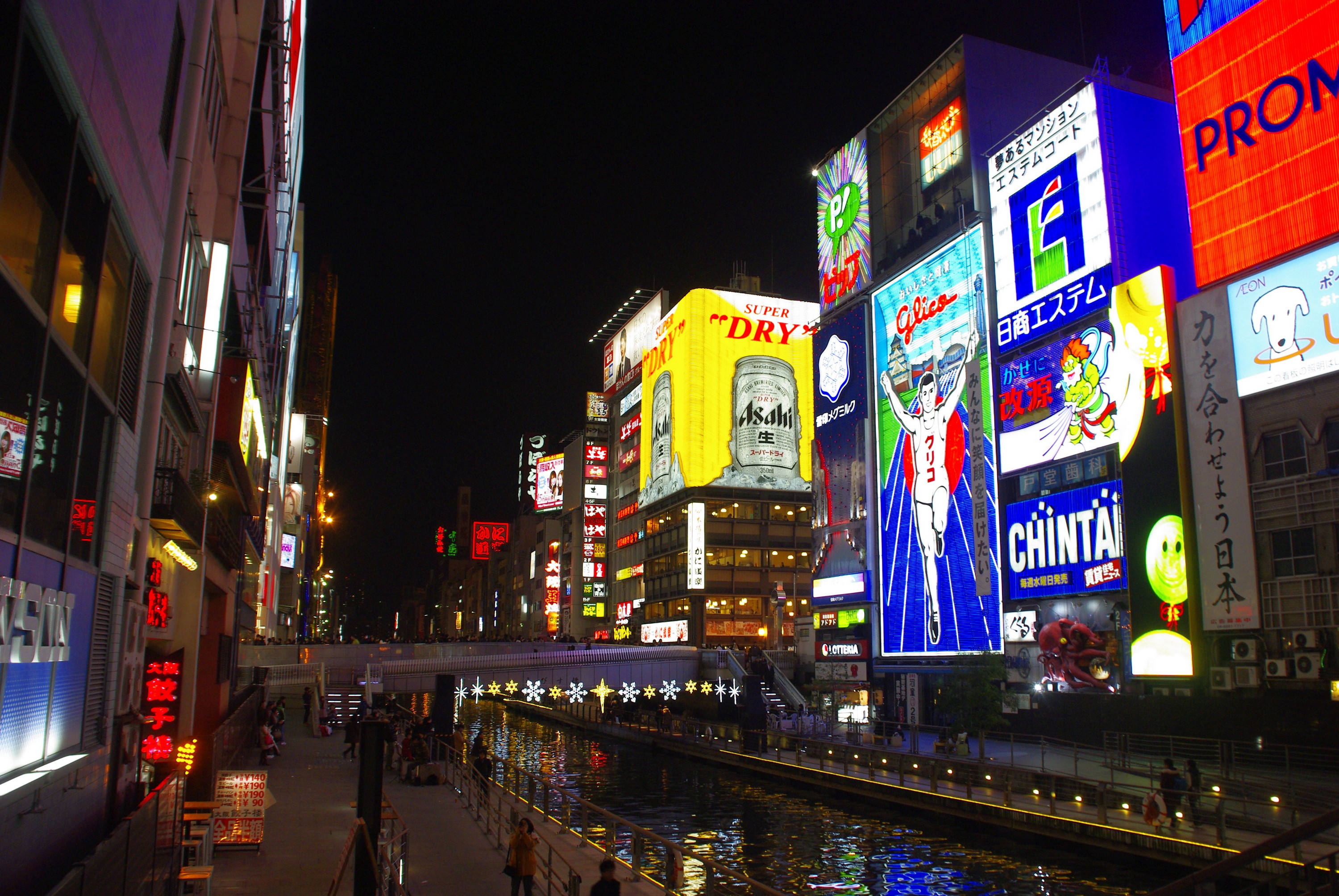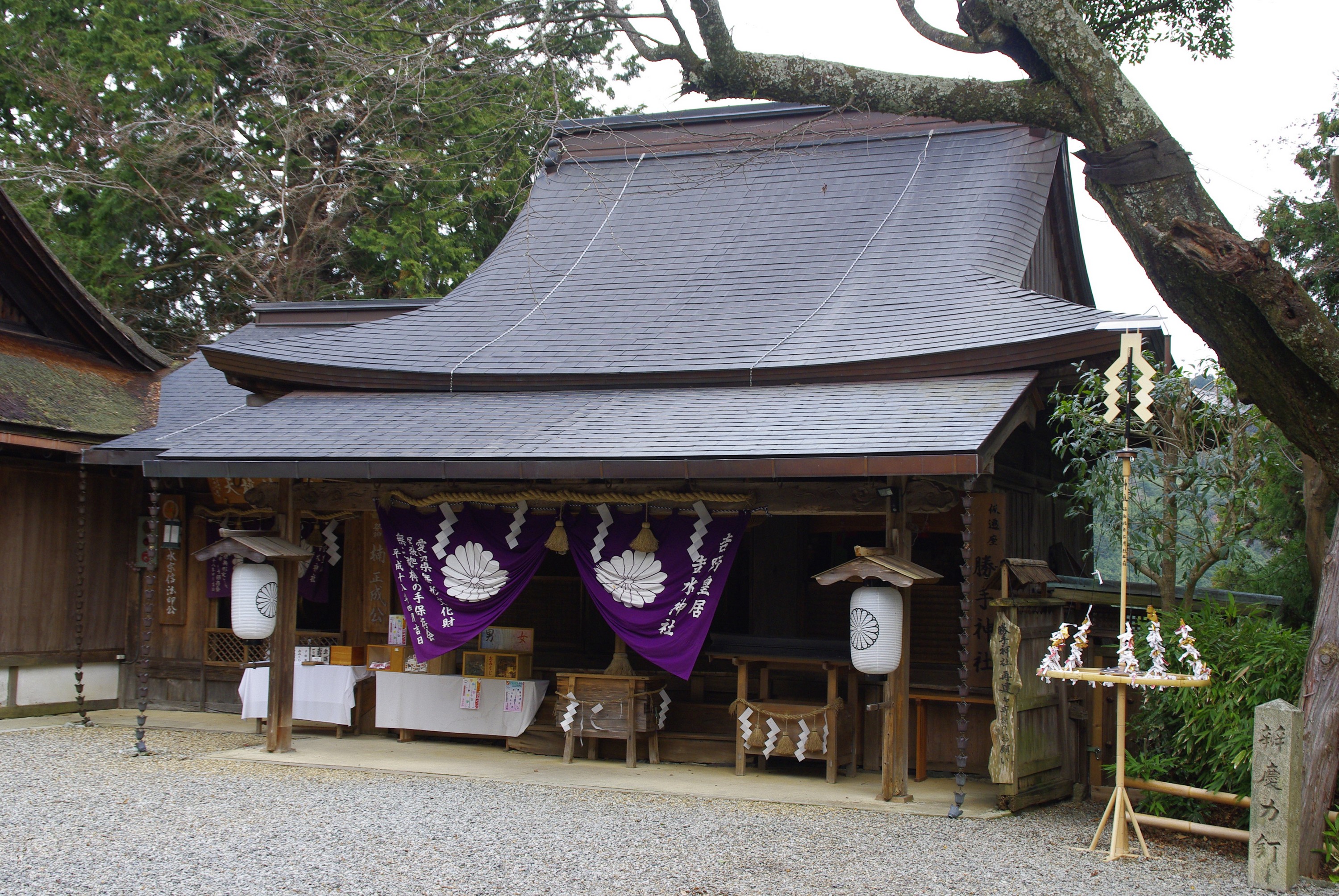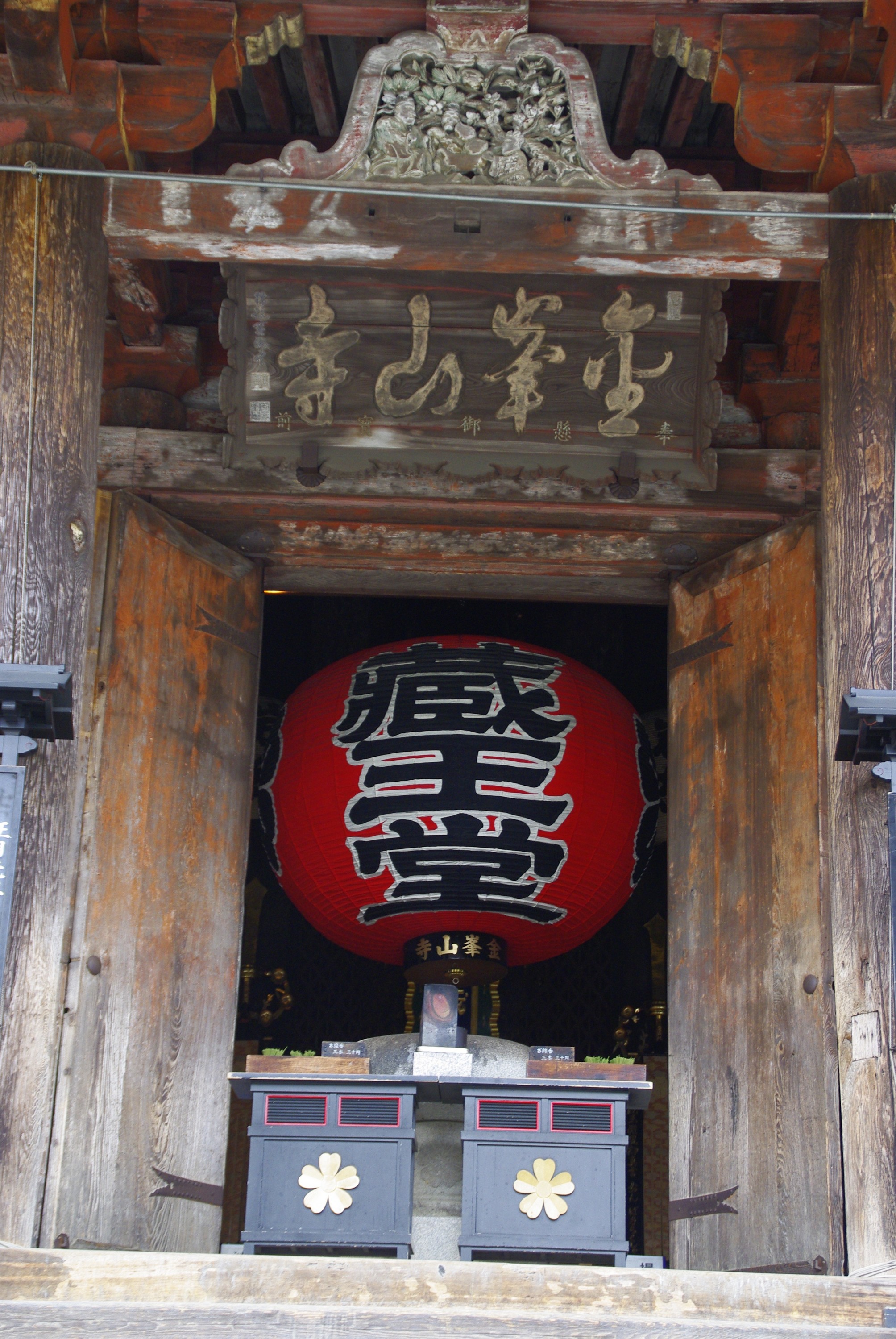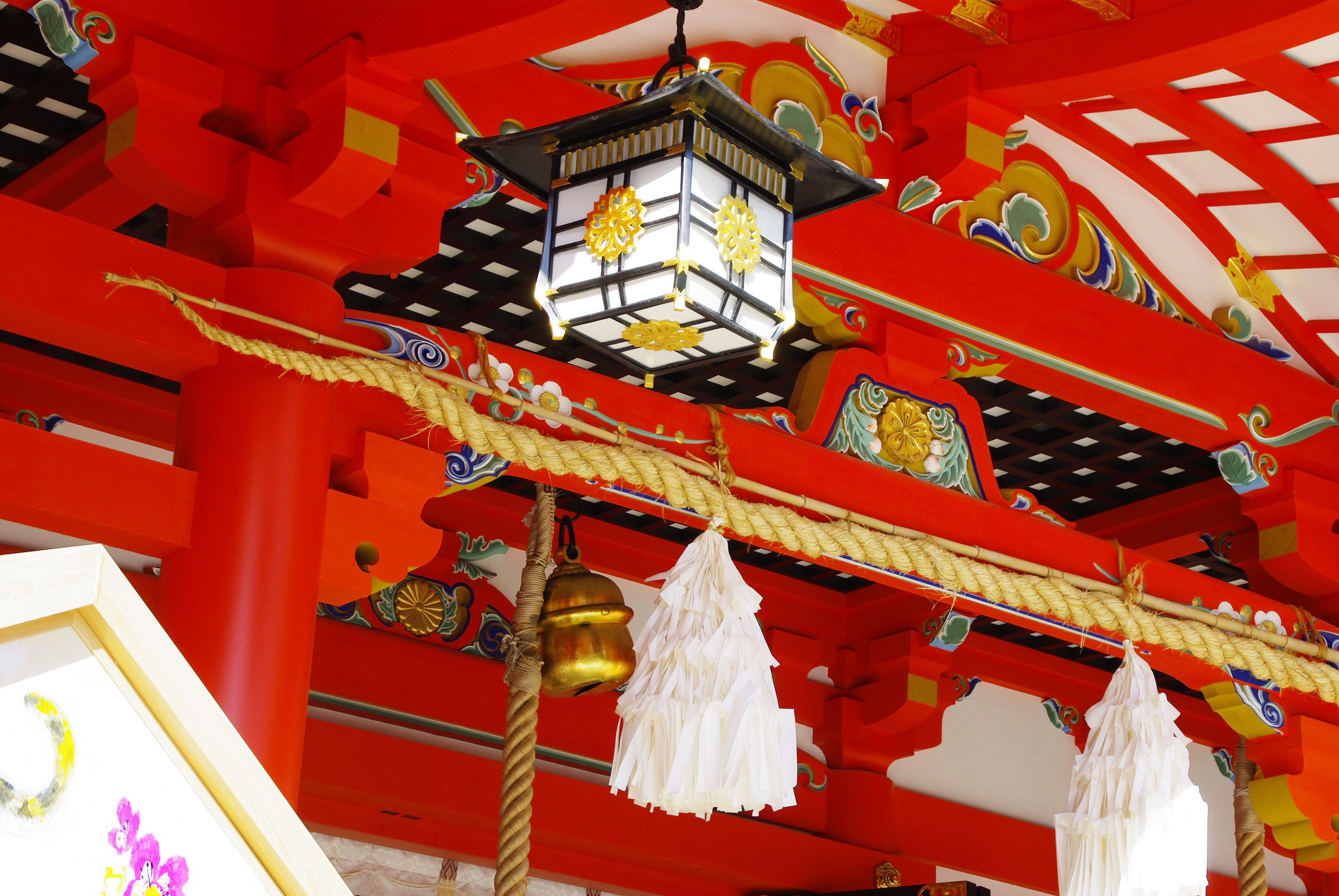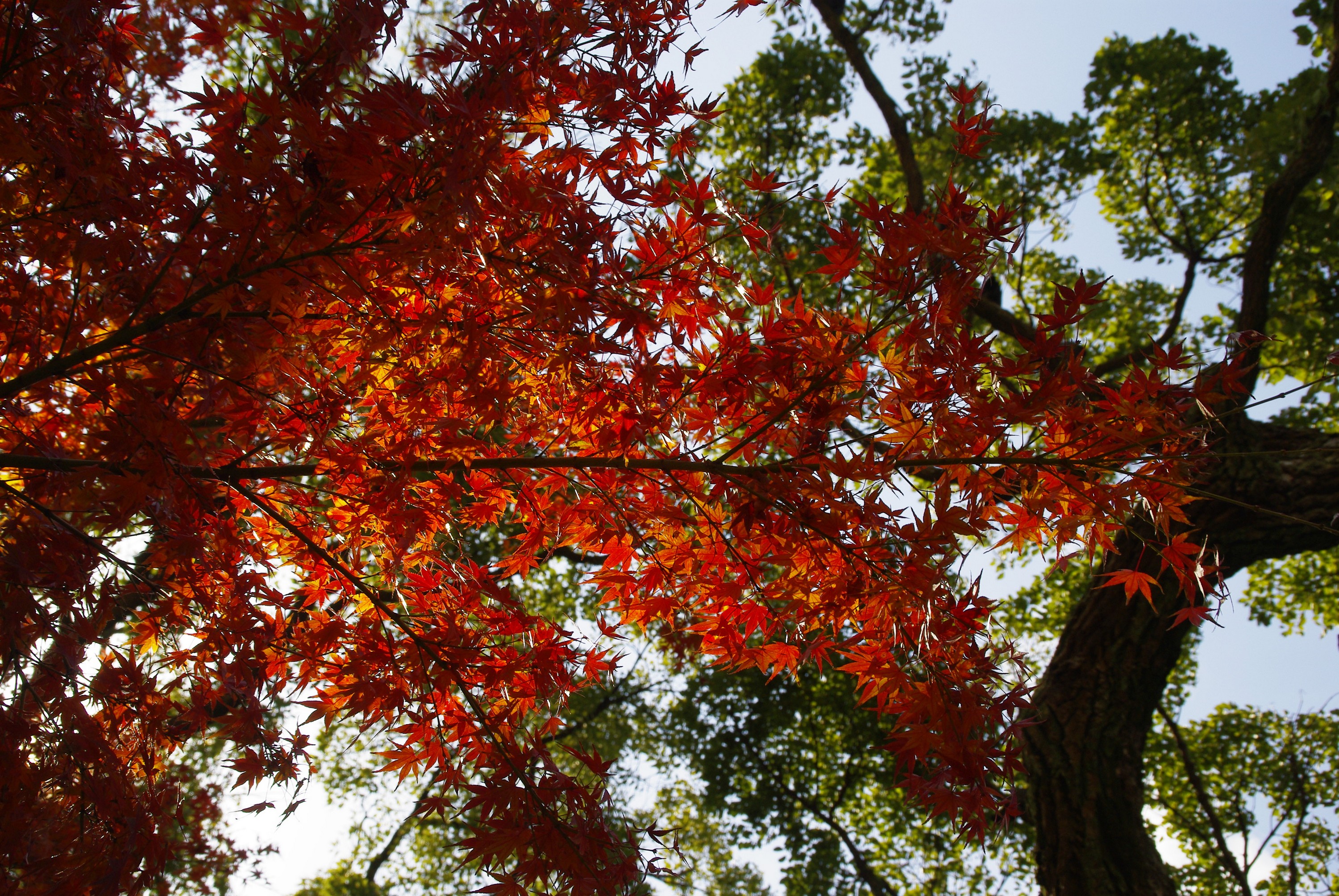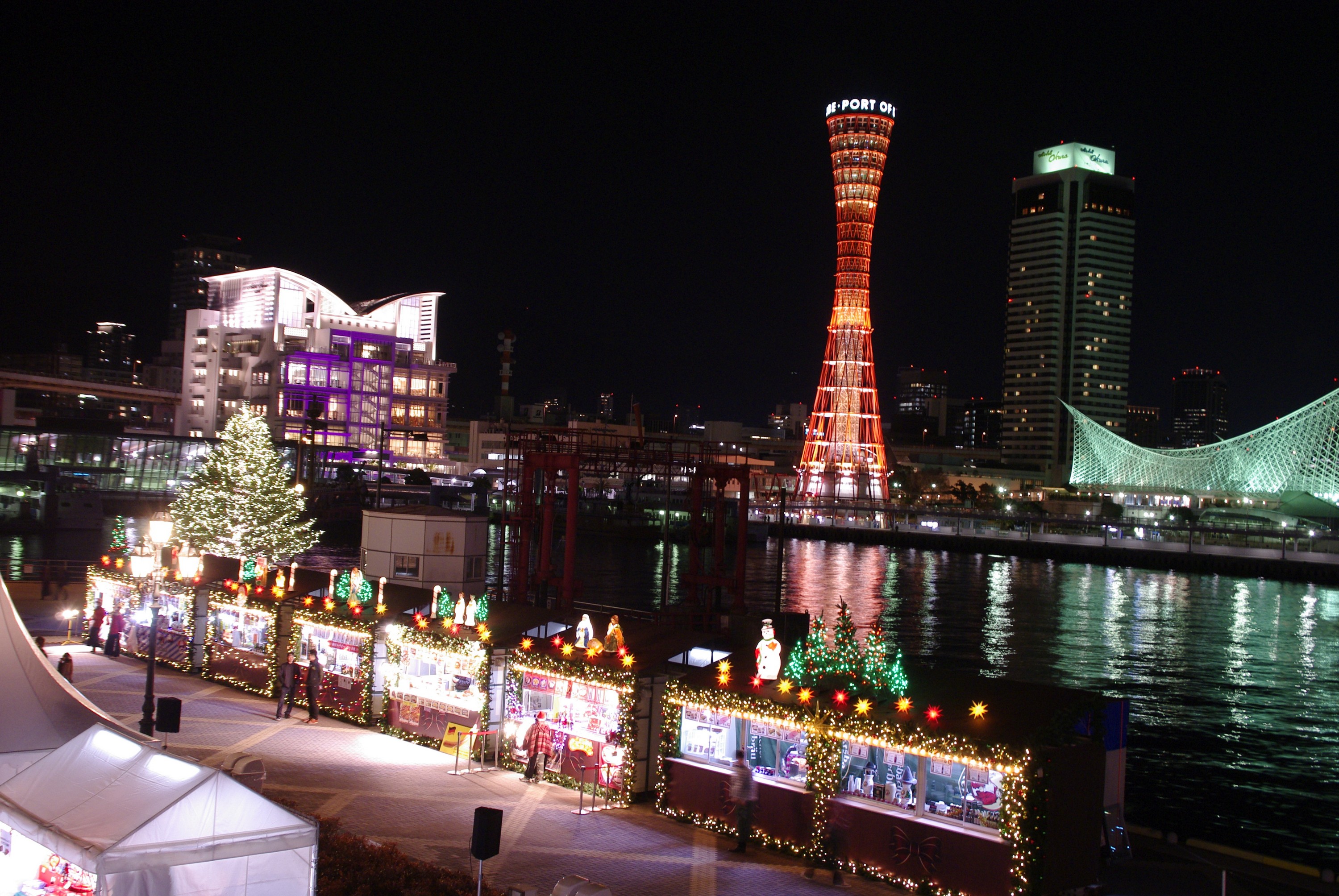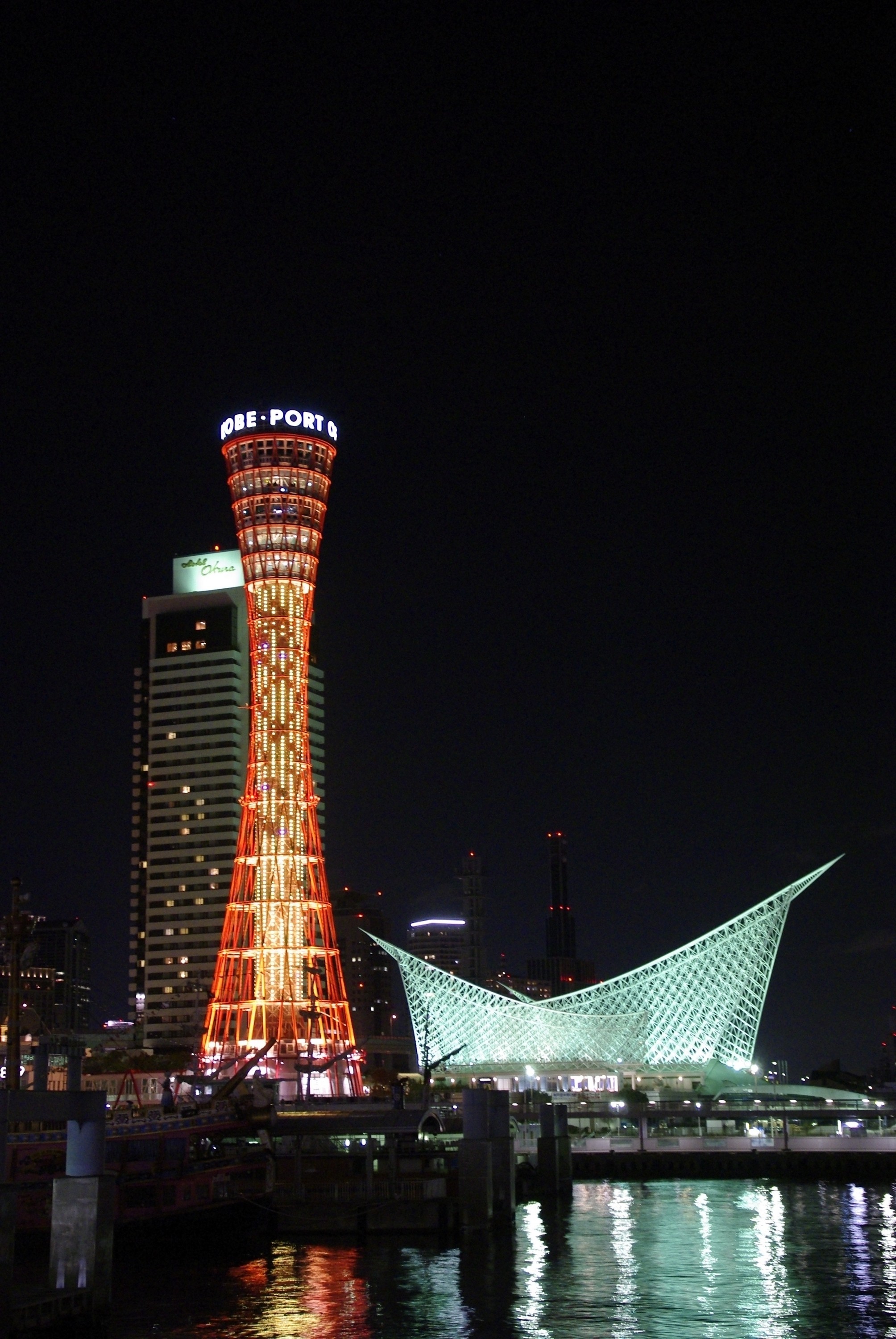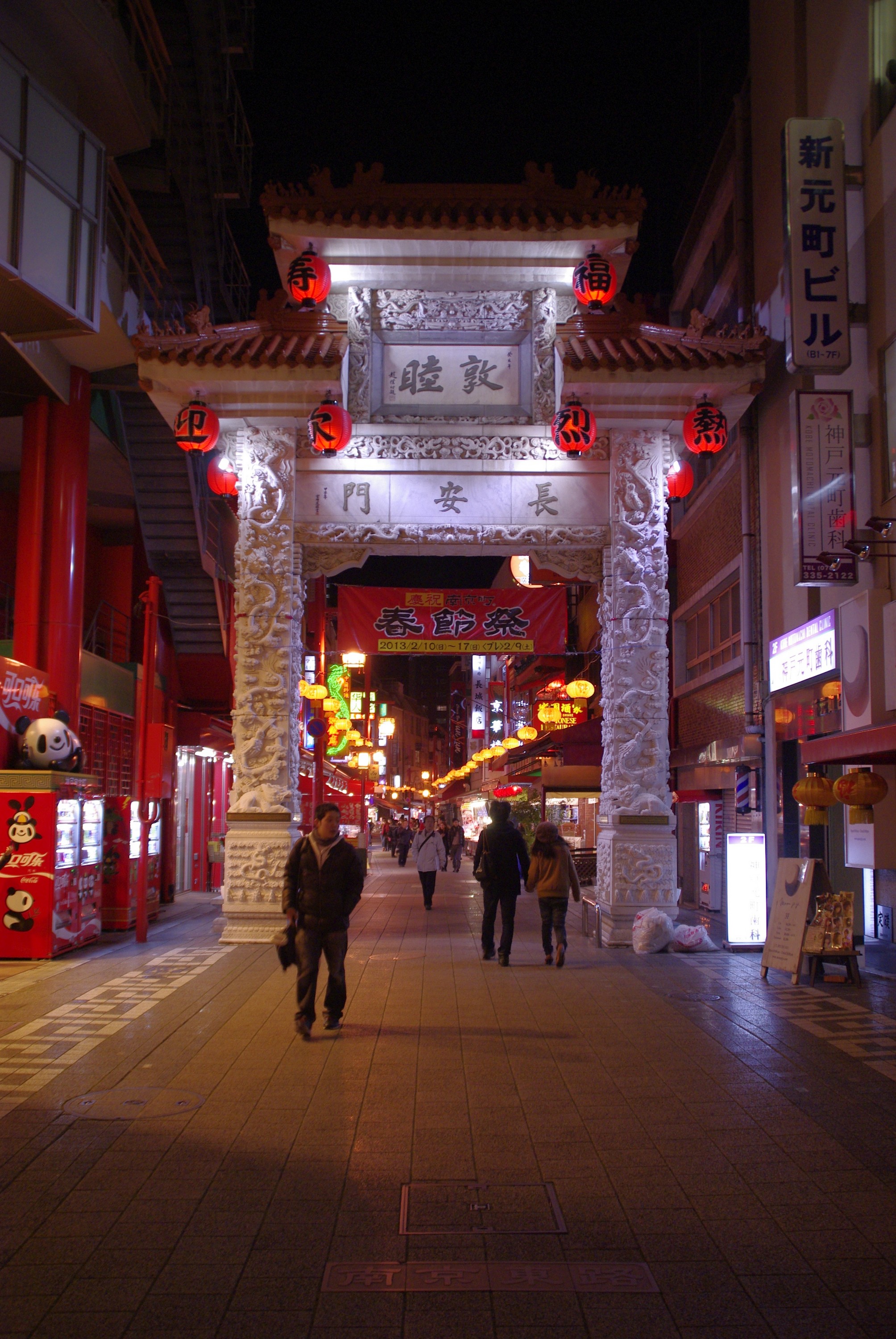Today ist Xmas eve and I visit Kyoto. I start at the train station. Maybe that Tokyo Eki is bigger and has more people running around, but Kyoto Eki is just one big building. It is nearly a quarter mile long and provides more than 15 levels above ground (plus several basement levels). The building is like a big hole with a roof. The broad stairway over 15 floor is just impressive architecture. Upstairs is the Skywalk. A small pathway right underneath the roof.
Inari Shrine
The next stop is everything but modern: The Fushimi-Inari-Shrine in South Kyoto (the train tracks mark the border between Kita and Minami / North and South Kyoto). Arriving by train I can spot the orange-red big gate from the platform. The buildungs are a sightseeing spot. It was a mistake to skip this shrine in my 2004 trip.
A good idea (to make some money) are Ema. Small wooden plates you can write your wishes on, like a letter the the deity. In this case the plate has the shape of a fox head. They are empty except for two lines that mark the eyes. It it impressive what people draw on this empty plates.
But the real attraction is behind the buildings: Torii. There are more than 1000 of them. It starts with 50 big ones in dark red. Then I arrive at the famous double row. Small Torii close-packed. What a view. What a view if you are standing inside. I stop counting after 200 Torii (in one row). It really is an experience to walk thru this tunnel of gates. The pictures do not capture this moment.
Behind the double row starts a 2,3km pilgrimage uphill with more gates. The guide says, that I need 2-3 hours. Shall I? But it will waste time. But I am already this far. What can I do? Damned. I’ll do it, but speed up. If there is no snow, I can run (this saying loses in the translation) …
Tofuku-ji
Uphill. Stairs. The width of one step is to short to walk it with two footsteps. The next time the stars are two small for one european footstep. I try to take two steps at once. This is hard stuff. I need more training. Downhill it shouldn’t do that. On the way up I have a nice view on Kyoto. The train station is easy to find. Now I can see how big this building really is. At the summit is an old shrine, meaning many old stones with ingravings. I do not understand the purpose.
Next stop is the Tofuku-ji. I walk. I pass a residential area with narrow streets. I recognize many red buckets. They are filled with water. Like in many anime. These buckets are for fire figthing. In front of every house are 10 litre of water. In Germany impossible. After the first night on a weekend these buckets would be empty and smashed.
The temple garden must be impressive during autumn color. I am too late. All the leaves are gone. The stone garden is bigger than the one in Ryoanji. It is worth the entrance fee. And there are three different stone gardens.
The subway brings me close to Kiyokizudera. I got myself lost in the maze of narrow, tiny streets of Higashiyama. Back on track I find myself in a shopping street that leads steep uphill to the temple. Or Shrine? I am not sure. In Kyoto you cannot seperate temple and shrines by building shape or the color of the torii.
Higashi-yama und Gion
I enter an unspectacular hall. From the padio I have a nice view on Kyoto. Behind the handrail it goes straight down. There is a path along the rock wall. The gallery on the other side is construction site. Bad timing. But now I have a good view at the padio and its wooden construction. This is the famous one. Wow. The path leads down to a tiny water fall. Also famous. It is the Ootwa-no-taki.
I spot a small shrine on the temple area that is filled with tourists. The attraction seems to be two stones. The shrine is the Jishu-Jinja and is dedicated to the deity of love. That explains a lot.
It is 3:30pm. I have to increase my speed. Back at the shopping street I almost miss the entrance to street with the old houses of Higashiyama. A nice place. A narrow street with stairs (and no cars). There are many shops inside the old houses to the left and right. Why I missed this place in 2004 … Maybe the same reason I missed the Kiyomizedera. I was stupid. Then I spot the first Geisha. Right. Gion is not that far away and the Chaya will open soon.
On the way Gio I get lost again; despite a map and a police box. What use is a map without the red „You are here“ dot? Argghh. I try the street on the left. It should end in a right turn. Yes. It does. This is Gion Corner. This area is filled with old tiny wooden houses and narrow alleys.
Gion
It starts to snow (a little bit) and dawn is beginning too. Last stop for today is Pontocho. Not an attraction like the usual ones. It is a narrow street with many Izakayas. Too small for a car but filled with tourists.
It is almost dark, when I am back at Higashiyama to take some night pictures (without a tripod). After that I walk home to the hotel. A long walk. Next time I’ll use the subway. Half way I decide for some snacks. I skipped lunch. The streets of Kyoto can be pretty dark. A brief stop at the train station for some Xmas feeling. Changing into something more stylish, abandon the camera and get into the next cab. Next stop: a Chaya.
I celebrate Xmas eve in compony of a meiko (Geshia still in training). She is speaking perfect english and serves all food and every single drink. There are some performances and drinking games. They know how to entertain. It is not cheap. Oh no. But it is awesome. I enjoy every single second (and the blog of today will end right here … *evil grin*).

